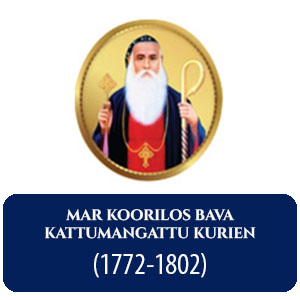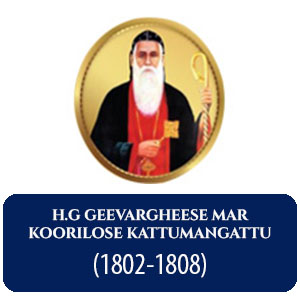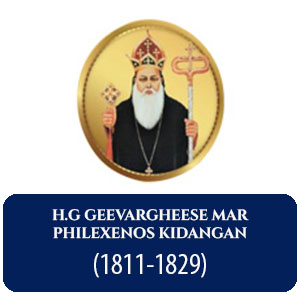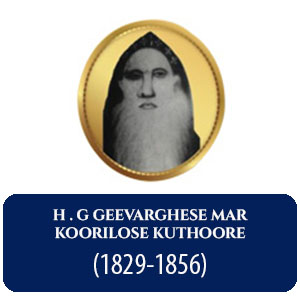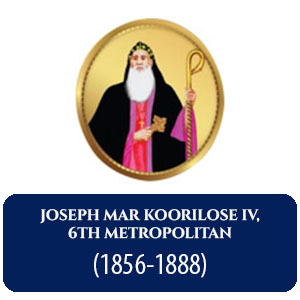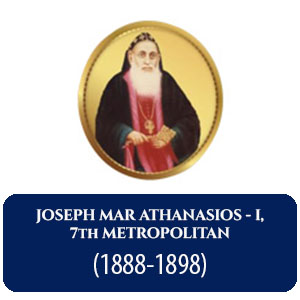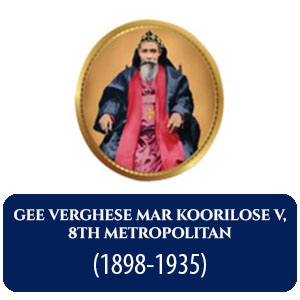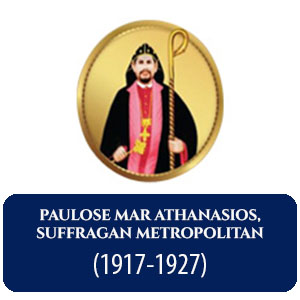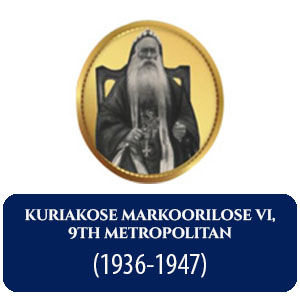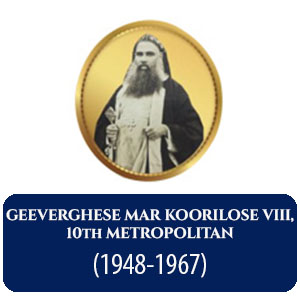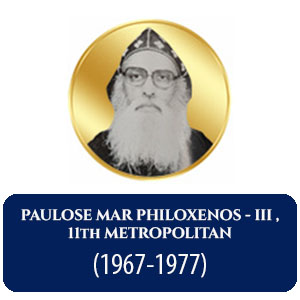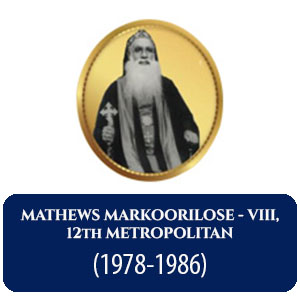About Us
Inside Paintings - West Wall
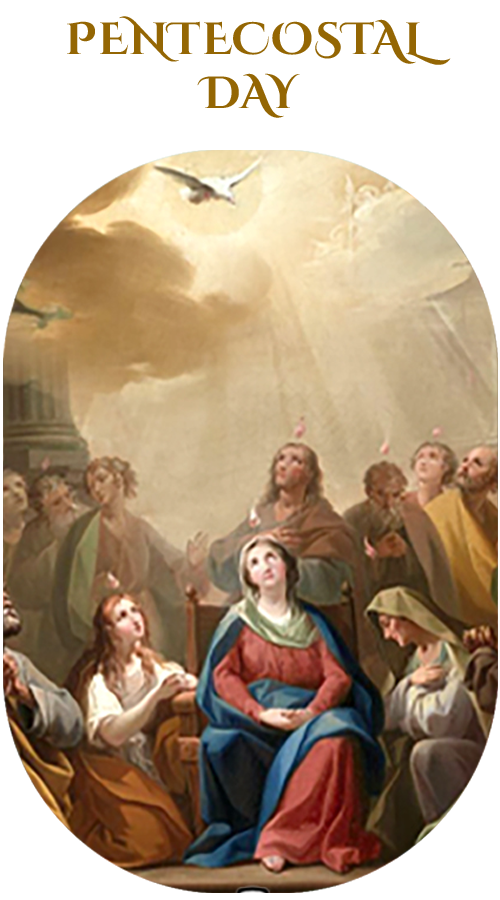
Pentecostal Day
Feast of Pentecost: The Descent of the Spirit and the Fulfillment of Promise
The Feast of Pentecost is celebrated fifty days after Pascha (Easter) and commemorates the descent of the Holy Spirit upon the Apostles, as recorded in Acts 2:1–4. It is seen as the moment when the Church, filled with divine power, was sent forth to proclaim the Gospel to all nations.
Old Testament Roots
Pentecost originates from the Old Testament Feast of Weeks (Shavuot), which was celebrated fifty days after Passover (see Leviticus 23:15–21; Deuteronomy 16:9–12). It was a harvest festival and also commemorated the giving of the Law on Mount Sinai. In the New Testament, this is fulfilled as God gives not just the Law, but the Holy Spirit, writing His law on the hearts of the faithful (Jeremiah 31:33; Ezekiel 36:26–27).
New Testament Roots
As the disciples waited in the Upper Room, “a sound like a rushing mighty wind” filled the house, and “tongues of fire” appeared above them. They spoke in various languages, and three thousand people were baptized that day (Acts 2), becoming the firstfruits of the Church—just as the first sheaves were offered at the Jewish Pentecost.
The Orthodox icon of Pentecost depicts the Apostles seated in harmony, with the Holy Spirit descending as rays of divine light, and a crowned figure labeled “Cosmos” below, symbolizing the world awaiting the Good News.
Pentecost is the birthday of the Church’s mission, the reversal of the Tower of Babel, and a call to unity in the Spirit, empowering us to live as witnesses of Christ to the ends of the earth.
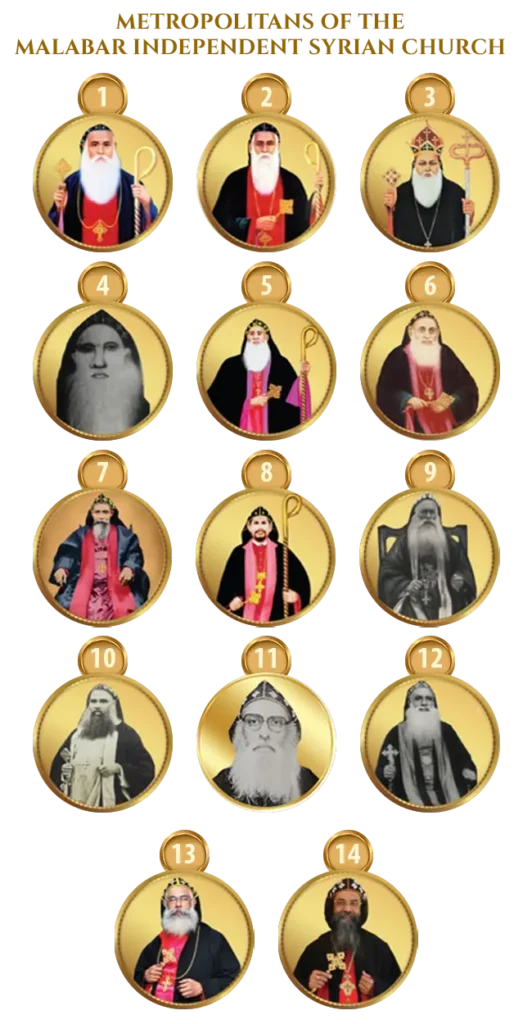
1. ST. ABRAHAM MAR KOORILOSE I (1772-1802)
Founder of the Malabar Independent Syrian Church
Mar Koorilos Bava Kattumangattu Kurien, also known as Abraham Mar Koorilos I or Kattumangattu Valiya Bava, was the first primate and Metropolitan of the Malabar Independent Syrian Church, initially called Thozhiyoor Church, established in 1772 in Kerala, India. As a young boy, Kurien impressed Bishop Mar Ivanios of Jerusalem by correcting a deacon’s liturgical mistake at Mulanthuruthy Church, leading to his ordination as a deacon and later a priest by Ivanios before the bishop’s departure in 1751. Kurien became a monk under Mar Baselios and Mar Gregorios and emerged as a leader opposing Malankara Metropolitan Mar Dionysius I.
In 1772, Mar Gregorios consecrated him as Bishop Abraham Mar Koorilos at Mattancherry Church, Cochin, sparking tensions that led to the formation of the independent Thozhiyoor Church. Exiled from Travancore and Cochin, he settled in Anjoor, Malabar, where he led the church until his death on July 10, 1802. His brother, Geevarghese Mar Koorilose II, succeeded him as primate until 1808. Mar Koorilos I’s leadership laid the foundation for the Malabar Independent Syrian Church, which adopted its official name in 1862.
2. ST. GEEVARGHEESE MAR KOORILOSE II (1802-1808)
Second Primate of the Malabar Independent Syrian Church
Born into the Kattumangattu family, H.G. Geevarghese Mar Koorilose Kattumangattu was consecrated as the second bishop of the Thozhiyoor Church in 1802, his gentle spirit and miraculous deeds weaving a legacy that echoed the apostolic roots of the community. Small Bava’s life, steeped in the East Syriac traditions cherished by his people, was a tapestry of divine wonders that drew the faithful to him, much like the Syriac hymns that filled their churches.
His tenure was marked by miracles that stirred hearts. Once, a barren woman, longing for a child, knelt before Small Bava, her tears mingling with hope. Through his fervent prayers, she conceived and bore a healthy child, a miracle the community hailed as a sign of his divine favor. Another time, when a deadly plague swept through his village, threatening to claim countless lives, Small Bava stood in prayer, his voice rising to the heavens. Witnesses spoke of a radiant light enveloping him as the plague mysteriously halted, sparing the village – a testament to his intercession that resonated with the Saint Thomas Christians’ reverence for holy men like St. John the Baptist.
When Small Bava passed in 1809, his burial at the Monastery of Saint Thomas in Vettikkal became a moment of divine drama. The people of Vettikkal, hesitant to allow his interment, stood firm until a sudden, torrential rain descended, drenching the land. Yet, miraculously, Small Bava’s casket remained untouched, dry amidst the deluge. Awed by this sign, the villagers relented, and he was laid to rest, his tomb becoming a sacred pilgrimage site. Another miracle unfolded in a village he once crossed, where fields lay ravaged by insects, the harvest doomed. Small Bava paused, prayed, and blessed the land. From that day, the crops flourished, untouched by pests, and every year, during his feast on May 28 and 29, the villagers send offerings of their bounty to Thozhiyoor, honoring his enduring blessing.
After his death, Small Bava’s tomb drew the faithful seeking miracles. A blind man, guided by faith, prayed at the grave and regained his sight, his eyes opened as if by divine light. A child, burning with a severe fever, was healed when his family invoked Small Bava’s name, their prayers answered with a swift recovery.
His gentle demeanor and miraculous works earned him the endearing title “Small Bava,” reflecting his humble yet powerful spiritual legacy.
3. H.G GEEVARGHEESE MAR PHILEXENOS KIDANGAN (1811-1829)
Fourth Primate of the Malabar Independent Syrian Church
Geevarghese Mar Philexenos II, also known as Kidangan Geevarghese Kattanar before his consecration, served as the fourth primate and Metropolitan of the Malabar Independent Syrian Church (Thozhiyoor Church) from 1811 to 1829. Hailing from a prominent Syrian Christian family in Kunnamkulam, near Thozhiyur, Kerala, he was a priest at Arthat Church before being consecrated as co-adjutor bishop by his predecessor, Skaria Mar Philexenos. His consecration was attended by large numbers of clergy and laity from Kunnamkulam and Pazhanji, reflecting the church’s acceptance and his personal esteem. Following the death of Skaria Mar Philexenos, he became Metropolitan in 1811.
During his tenure, Geevarghese Mar Philexenos II played a significant role in the broader Malankara Church.Colonel John Munro, a devout Christian and British Resident of Travancore and Cochin from 1810, took a keen interest in the Syrian Christian community in Kerala, which was embroiled in disputes over ecclesiastical leadership. The validity of Mar Thoma VIII’s consecration as Malankara Metropolitan was contested, leading to significant unrest. Notably, Abraham Malpan, a future reformer, doubted his ordination by Mar Thoma VIII and sought re-ordination by a Jacobite Metropolitan from Syria, resulting in his imprisonment. Among the protesters was Ramban Pulikottil Ittoop (Joseph), a former pupil of Abraham Mar Koorilos I of the Thozhiyoor Church, who had invited Mar Koorilos to Kunnamkulam. This turbulent context set the stage for H.G. Geevarghese Mar Philexenos Kidangan, who, as the fourth primate of the Malabar Independent Syrian Church (1811–1829), later served as Acting Malankara Metropolitan in 1816 and consecrated three Malankara bishops, stabilizing the church amidst these conflicts.
Geevarghese Mar Philexenos II managed the Malankara Church’s financial interests, including the Vattipanam (fixed deposit), from 1816 until his death. He died on February 7, 1829, and was laid to rest at Thozhiyur, leaving no immediate successor, after which the Malankara Church assisted in consecrating his successor, Geevarghese Mar Koorilose (Kuthoorey). His leadership strengthened the Thozhiyoor Church’s stability and its cooperative ties with other Saint Thomas Christian communities.
4. H.G GEEVARGHESE MAR KOORILOSE KUTHOORE (1829-1856)
Fifth Primate of the Malabar Independent Syrian Church
Geevarghese Mar Koorilose III, also known as Kuthoore Geevarghese Koorilose, served as the fifth primate and Metropolitan of the Malabar Independent Syrian Church (Thozhiyoor Church) from 1829 to 1856. Succeeding H.G. Geevarghese Mar Philexenos II, who died in 1829 without an immediate successor, he was consecrated with the assistance of the Malankara Church, reflecting cooperative ties between the two communities despite past tensions. Based in Thozhiyur, Kerala, he led the church during a period marked by the growing influence of British colonial authorities and internal reforms within the broader Saint Thomas Christian tradition.
During his tenure, Geevarghese Mar Koorilose III maintained the Thozhiyoor Church’s independence and oversaw its spiritual and administrative stability. While specific details of his episcopal actions are limited, his leadership coincided with significant developments in the Malankara Church, including the reformist movements initiated by figures like Abraham Malpan and the impact of Colonel John Munro’s interventions as British Resident. Geevarghese Mar Koorilose III’s role ensured the continuity of the Thozhiyoor Church’s mission amidst these changes. He served until his death in 1856 and was succeeded by Joseph Mar Koorilose IV. His tenure strengthened the church’s foundation, preserving its distinct identity within the Syrian Christian community.
5. H.G JOSEPH MAR KOORILOSE - IV, 6TH METROPOLITAN (1856-1888)
Expansion of the Malabar Independent Syrian Church
During the tenure of Joseph Mar Koorilose IV, the sixth Metropolitan of the Malabar Independent Syrian Church (MISC), the church expanded its presence by establishing or acquiring key parishes in Kunnamkulam, Chalissery, and Porkulam, primarily under the earlier leadership of Abraham Mar Koorilos I. A native of Kunnamkulam, Joseph Mar Koorilose IV fulfilled his personal desire to establish a church in his hometown on an elevated plot, known as the “Hill Church” or formerly the Seminary Church, which became a fully constituted parish. This church, renovated in 1940 with support from Christians of all denominations, remains a significant landmark.
The church at Chalissery, dedicated to the rare patron St. Augan the Martyr, was acquired during a legal dispute with Yoakim Mar Koorilose, a delegate of the Patriarch of Antioch who arrived in Malankara in 1846. Yoakim claimed Thozhiyoor Church properties for the Patriarch. In 1857, Yoakim filed a civil suit claiming to be the Malankara Metropolitan and asserting rights over the Thozhiyoor Church and its properties, including churches at Kunnamkulam, Chalissery, and Porkulam. In 1862, the Madras High Court ruled against Yoakim, affirming that the Thozhiyoor Church was an independent entity with no ties to the Patriarch. The verdict declared it the Malabar Independent Syrian Church (MISC), officially establishing its name and autonomy. Lacking assets, he forfeited churches he had established, including St. Augan’s at Chalissery and St. Adai’s at Porkulam, both in British Malabar, to the MISC. Chalissery’s church, with its unique hemispherical stone sanctuary designed by Yoakim, was renovated in 1896, preserving its distinctive architecture. St. Adai’s Church at Porkulam, located on a serene hill ideal for worship, also joined the MISC and was rebuilt in 1970 after an earthquake damaged its sanctuary. A third church at Mattancherry, Fort Cochin, was acquired but later sold due to its distance from Thozhiyur.
A notable miracle during Joseph Mar Koorilose IV’s tenure involved a priest bitten by a pet dog at the bishop’s residence, who later showed signs of rabies. The Metropolitan, distressed by the irony given the church’s reputation for treating rabies, secluded himself in prayer for three days. On the third day, he celebrated the Holy Qurbana, and the priest, restored to his senses, received Holy Communion and recovered fully. This priest later became Joseph Mar Athanasios (Maliyakkal), the succeeding Metropolitan. A visitor’s entry in the Thozhiyur Visitors’ Book on March 28, 1889, after Joseph Mar Koorilose IV’s death, records gratitude for his healing ministry, noting the recovery of the visitor’s son and three other children from rabies. This underscores the church’s legacy of spiritual and physical healing under his leadership.
6. H.G JOSEPH MAR ATHANASIOS - I, 7th METROPOLITAN (1888-1898)
Seventh Primate of the Malabar Independent Syrian Church
Joseph Mar Athanasios I, also known as Maliyakkal Joseph, served as the seventh primate and Metropolitan of the Malabar Independent Syrian Church (MISC), also called Thozhiyoor Church, from 1888 to 1898. A native of Kunnamkulam, he was the priest miraculously healed from rabies during the tenure of his predecessor, Joseph Mar Koorilose IV, through prayer and Holy Qurbana, as noted in a 1889 entry in the Thozhiyur Visitors’ Book. Consecrated in 1883 by Mar Koorilose IV, with assistance from Thomas Mar Athanasios of the Malankara Church, he became Metropolitan upon Mar Koorilose IV’s death in 1888.
During his leadership, Joseph Mar Athanasios I played a pivotal role in supporting the Malankara Mar Thoma Syrian Church during a crisis. After Thomas Mar Athanasios’ death in 1893 without a consecrated successor, the Mar Thoma Church faced threats from opponents seeking to suppress its reformist movement. In 1894, despite initial hesitation and amid significant opposition, Joseph Mar Athanasios I, accompanied by his suffragan Geevarghese Mar Koorilose, traveled to Kottayam and consecrated Father Dethos, the eldest son of Abraham Malpan, as Titus I Mar Thoma at Cheriapally (Small Church). This act ensured the continuity of the Mar Thoma Church’s episcopal succession, echoing the Thozhiyoor Church’s historical role in supporting other Saint Thomas Christian communities.
7. H.G GEE VERGHESE MAR KOORILOSE - V, 8TH METROPOLITAN (1898-1935)
Eighth Primate of the Malabar Independent Syrian Church
Geevarghese Mar Koorilose V served as the eighth primate and Metropolitan of the Malabar Independent Syrian Church (MISC), also known as Thozhiyoor Church, from 1898 to 1935. Consecrated as suffragan bishop in 1892 by his predecessor, Joseph Mar Athanasios I, with assistance from Thomas Mar Athanasios of the Malankara Mar Thoma Church, he assumed the role of Metropolitan upon Joseph Mar Athanasios I’s death in 1898. His 37-year tenure, one of the longest in the church’s history, was marked by steadfast leadership during a period of social and ecclesiastical change in Kerala’s Saint Thomas Christian community.
Geevarghese Mar Koorilose V continued the MISC’s tradition of independence and ecumenical cooperation. In 1894, as suffragan, he accompanied Joseph Mar Athanasios I to Kottayam to consecrate Titus I Mar Thoma, ensuring the continuity of the Mar Thoma Church’s leadership during a critical period. His episcopate oversaw the administration of key MISC parishes, including the Hill Church in Kunnamkulam, St. Augan’s Church in Chalissery, and St. Adai’s Church in Porkulam, maintaining their spiritual and communal significance. The church’s healing ministry, a hallmark of his predecessors, likely persisted under his guidance, though specific miracles are not well-documented.
Based in Thozhiyur, Geevarghese Mar Koorilose V navigated the challenges of British colonial influence and the evolving dynamics among Syrian Christian denominations. His long leadership strengthened the MISC’s role as a small but resilient community, preserving its distinct identity. He served until his death in 1935, succeeded by Kuriakose Mar Koorilose VI, leaving a legacy of stability and continuity for the Malabar Independent Syrian Church.
8. H.G PAULOSE MAR ATHANASIOS, SUFFRAGAN METROPOLITAN (1917-1927)
Paulose Mar Athanasios, often identified as Kadavil Paulose Mar Athanasios, served as a notable Suffragan Metropolitan in the Malankara Syrian Orthodox Church, with his active tenure traditionally noted from 1917 until his death in 1927. Born in 1833, he was ordained a deacon in 1846 and a priest in 1854, later elevated to Ramban in 1876. Consecrated as a bishop by Patriarch Moran Mar Ignatius XXXIV Boutros III/IV on November 3, 1876, he initially led the Kottayam diocese following the Mulanthuruthy Synod of 1876. From 1891, he also oversaw the Angamaly diocese, contributing to the construction of St. Mary’s Church at Thrikkunathu, Aluva. His vision included establishing a seminary at Aluva, supported by his personal property donations. However, historical records indicate he passed away on November 2, 1907, suggesting the 1917-1927 period may reflect a legacy or regency under his successors rather than his direct service. He was buried at St. Mary’s Church, with his tomb later modified.
Mar Koorilose-V, a predecessor with a profound legacy, belonged to the well-known Pulikkottil family of Pazhanji. His parents were Variath and Mariam, and he was the youngest of their twelve children, all of whom passed away early in childhood. Losing his mother in boyhood, he was raised by his father, who lived to see his son consecrated as a bishop. Though Geeverghese (his pre-consecration name) discontinued his studies after passing the lower primary examination, his thirst for knowledge drove him to become a Syriac scholar through self-study. Committed to education, he founded schools in Porkulam, Chalissery, and Thozhiyur, facing opposition from neighboring school managers. He also prioritized religious education, sending clergy to theological institutions in Serampore and Kottayam.
His compassion extended beyond the church, aiding the poor regardless of caste or creed. Once, a poor Hindu boy sought help with tuition fees; despite the church’s bankruptcy due to falling coconut prices, Mar Koorilose-V gave him the last Rs3 meant for his diabetic diet, opting to share rice instead. Another notable act involved Nzhiyath Krishnan Nair, a student whose poetic talent impressed the Metropolitan. When poverty forced Nair to drop out, Mar Koorilose-V funded his education, leading Nair to prominence at Mathrubumi newspaper. Grateful, Nair later sponsored a student in 1952 and established a scholarship at CMUP School, Thozhiyur.
During the Khilafat rebellion, Mar Koorilose-V’s generosity shone when he vouched for an arrested Muslim, securing his release despite the man’s past theft of church property. His influence reached high officials like Sir C. Sankaran Nair and Mr. Statham, who signed his Visitors’ Book, and he nominated A.T. George Alimoottil to the District Education Board. An adept administrator, he scrutinized records monthly. Yet, fortune tested him when a horse-cart accident injured his foot, necessitating an operation by Dr. Homes at the episcopal palace, leaving a permanent scar.
Seeking a successor, he chose Father Paulose of the Panakal family, ordained as Ramban in 1907 and consecrated as Paulose Mar Athanasios in 1917, serving as Suffragan until his asthma-related death in 1927. Mar Koorilose-V’s contributions included churches at Pazhanji and Kallumpuram, funded by pledging church properties amid low coconut prices. He participated in key consecrations, including Titus-I Mar Thoma in 1893 and Titus-II’s Silver Jubilee in 1924.
His devotional life was exemplary. Intolerant of prayer disturbances, he once cursed a disruptor during an ordination at Porkulam, causing the man to collapse, then healed him post-service. Rising before dawn for over an hour of Syriac psalm devotion, he celebrated Holy Qurbana daily in August, his birthday month, his sweet voice enhancing the solemnity.
9. H.G KURIAKOSE MAR KOORILOSE - VI, 9TH METROPOLITAN (1936-1947)
Kuriakose Mar Koorilose VI, the 9th Metropolitan of the Malabar Independent Syrian Church (MISC), served from 1936 to 1947, guiding the community through a transformative era marked by global challenges, including World War II and India’s independence movement. Born K.M. Kuriakose, he began his career as a teacher at the higher elementary school in Thozhiyur after completing high school, showcasing his commitment to education and community welfare. He later served as a priest, deepening his spiritual influence within the MISC.
Following the sudden death of Geevarghese Mar Koorilose V from a heart attack on 21 April 1935, Titus II Mar Thoma, Metropolitan of the sister Mar Thoma Syrian Church, arrived at Thozhiyur to facilitate the election of a new Metropolitan. On a Sunday, representatives of the parishes gathered at the Cathedral to choose between two candidates: Father K.M. Kuriakose, aged 52, and Father C.J. Verghese, aged 28. Titus II Mar Thoma opened the meeting with prayer, emphasizing the strong cooperation between the Mar Thoma Syrian Church and the MISC, including their mutual participation in consecrating bishops. When asked to nominate a candidate, the representatives, led by Sri C.P. Chummar of Chalisserri Parish, unanimously agreed to accept Titus II’s choice. With tears in his eyes, the Metropolitan selected Father K.M. Kuriakose as the senior candidate, noting that Father C.J. Verghese could succeed him in the future. The congregation accepted this decision, resulting in one of the most peaceful episcopal elections in the church’s history. Father C.J. Verghese later succeeded Kuriakose Mar Koorilose VI in 1948. On 23 January 1936, Father K.M. Kuriakose was consecrated as Kuriakose Mar Koorilose VI by Titus II Mar Thoma, assisted by Abraham Mar Thoma, his suffragan.
Kuriakose Mar Koorilose VI’s tenure was a period of stability and growth for the MISC. He played a key role in fostering ties with the Mar Thoma Syrian Church, participating in the consecration of Juhanon Mar Timothios Episcopa and Mathews Mar Athanasios Episcopa in 1937. Under his leadership, significant developments included the construction of a chapel at Akathiyur, three miles north of Kunnamkulam, and the reconstruction of St. Thomas Church in Kunnamkulam in 1940. The church’s financial stability improved, enabling the recovery of some mortgaged properties.
Despite these achievements, Kuriakose faced challenges in maintaining peace and prosperity within the church. His health deteriorated in his later years, with failing eyesight confining him to bed for the final two years of his life.
Kuriakose Mar Koorilose VI passed away on 15 October 1947. His leadership ensured the MISC remained a spiritual anchor for its small community during a turbulent global era. Following his death, the church adopted a new constitution to modernize its administration, building on his legacy.
10. H.G GEEVERGHESE MAR KOORILOSE - VIII, 10th METROPOLITAN (1948-1967)
Born as C.J. Verghese, the son of Cheeran Iyyob Kasesa, a former Vicar General of the MISC, he completed his high school education and joined the staff of the higher elementary school at Thozhiyur. As a priest, he was known for his dedication to the church’s traditions and community service. In 1935, at age 28, he was a candidate for Metropolitan following the death of Geevarghese Mar Koorilose V. However, the senior candidate, Father K.M. Kuriakose, was chosen as Kuriakose Mar Koorilose VI, with Titus II Mar Thoma noting that Verghese could succeed him later. This came to pass in 1948.
Following the death of Kuriakose Mar Koorilose VI on 15 October 1947, C.J. Verghese was elected Metropolitan. He was consecrated as Geevarghese Mar Koorilose VIII in 1948 by Dr. Juhanon Mar Thoma, assisted by Dr. Mathews Mar Athanasios Episcopa of the Mar Thoma Syrian Church, reflecting the deep collaboration between the two churches.
Geevarghese Mar Koorilose VIII led the MISC during India’s post-independence era, maintaining its Oriental Orthodox traditions and West Syriac Rite while fostering ecumenical ties, particularly with the Mar Thoma Syrian Church. He participated in the consecration of Dr. Alexander Mar Theophilos, Thomas Mar Athanasios, and Philipose Mar Chrysostom in 1953, and attended the Silver Jubilee celebration of Dr. Juhanon Mar Thoma and Dr. Mathews Mar Athanasios in 1962.
One of his most notable achievements was the establishment of St. George’s High School at Thozhiyur. At the time, no high schools existed within a four-mile radius of the church. On 23 April 1952, the Metropolitan laid the foundation stone. To meet the Madras Educational Rules for recognition, the church had to secure an endowment of Rs. 30,000, using church properties as collateral due to limited funds. These properties were later recovered after fulfilling payment obligations. He also raised a scholarship fund for poor children, staunchly defending its use exclusively for education despite suggestions to divert it for other purposes.
Geevarghese Mar Koorilose VIII was a compassionate advocate for the underprivileged. While staying in Pazhanji, he learned of an elderly homeless man and urged the community to care for such individuals. He personally funded the purchase of a site in Pazhanji to build a Poor Home. On June 1950, he laid the foundation stone, and with contributions from local Christians, a building to house three families was completed by September 1951, inaugurated by the Metropolitan himself.
He took a keen interest in the Gospel Association, founded in 1948 to enhance spiritual life through Sunday Schools, evening meetings, and house visits. The association, led by clergy and elected representatives, included activities such as printing and distributing Bible reading cards, organizing annual camps for Sunday school children and teachers, holding retreats, conducting an annual convention, and administering a common examination for Sunday Schools each December. The association’s accounts were audited annually, with a budget prepared and shared with the church council, funded by parish collections and the Central Church Fund.
In 1948, with assistance from Juhanon Mar Thoma, the MISC adopted a new constitution, establishing the Sabha Mandalam as the supreme authority, comprising bishops, clergy, and elected lay members, to oversee constitutional amendments and episcopal elections.
In his later years, Geevarghese Mar Koorilose VIII suffered from heart trouble, necessitating an assistant bishop. On 30 December 1965, the general body convened to elect a bishop, but the Kunnamkulam parish, a small congregation, was not represented, leading to a civil suit and a High Court stay. The stay was lifted in early 1967, and on 9 May 1967, the general body, with assistance from Thomas Mar Athanasios Episcopa of the Mar Thoma Church, elected Rev. Father Paul Thomas as the successor. Geevarghese Mar Koorilose VIII passed away on 9 June 1967. To prevent future disputes, the constitution was amended on 5 November 1967 to ensure representation for small parishes with at least ten families in municipal areas.
His tenure ensured the MISC remained a vital spiritual anchor for its approximately 5,000 members, navigating the challenges of post-independence India with resilience and compassion.
11. H.G PAULOSE MAR PHILOXENOS - III, 11th METROPOLITAN (1967-1977)
Paulose Mar Philoxenos III, born A. Paul, into a devout family in Thozhiyur, Kerala, came from a lineage dedicated to the MISC. His grandfather, Rev. Fr. Paulose Ayyamkulam, served as Vicar General, and his uncle, Rev. Job A. Paul, led an educational institution. Paul received his early education at David Memorial L.P. School and M.J.D. High School in Kunnamkulam, followed by higher education at Sree Krishna College, Guruvayur, St. Thomas College, Thrissur, Municipal College of Education, Chickballapur, Karnataka, and later at Solapur, where his father was employed. Before his consecration, he served as a teacher at St. George’s High School in Thozhiyur and held key roles as secretary of the Gospel Association and the Sabha Council, strengthening the church’s spiritual and administrative framework.
Paulose was ordained as a deacon in 1952 and as a priest in 1961 by Geevarghese Mar Koorilose VIII. Following the death of Geevarghese Mar Koorilose VIII on 9 June 1967, the church convened on 9 May 1967 to elect a new Metropolitan. Assisted by Thomas Mar Athanasios Episcopa of the Mar Thoma Syrian Church, the general body elected Rev. Father A. Paul. On 16 December 1967, he was consecrated as Paulose Mar Philoxenos III by Dr. Juhanon Mar Thoma, assisted by Dr. Alexander Mar Theophilos Episcopa and Dr. Thomas Mar Athanasios Episcopa, underscoring the strong ecumenical ties between the MISC and the Mar Thoma Syrian Church.
Paulose Mar Philoxenos III led the MISC during a period of growth, maintaining its Oriental Orthodox traditions and West Syriac Rite while fostering community development. His tenure saw the completion of several projects initiated by his predecessor, including the construction of St. Mary’s Church at Perumannoor, the Bahanam Chapel at Anjoor, and the Mar Koorilose Chapel at Korattikara. He also established new institutions, such as the St. George Chapel at Karikkad, the St. Thomas Press at Kunnamkulam, and a Poor Home at Chalissery, enhancing the church’s infrastructure and social outreach.
Two significant events marked his ministry: the canonization of Mar Koorilose I, the founder of the Cathedral Church, and the celebration of the second centenary of the Cathedral Church. To commemorate these milestones, Paulose Mar Philoxenos III inaugurated a mission hospital at Anjoor on 28 May 1972, named in memory of Mar Koorilose I, whose healing gifts were legendary. This hospital was a fitting tribute to the church’s founder and strengthened the MISC’s community service efforts.
He also supported the Gospel Association, founded in 1948, which organized Sunday Schools, retreats, annual conventions, and Bible reading card distribution, reinforcing the spiritual life of the MISC’s approximately 5,000 members.
On 28 August 1977, Paulose Mar Philoxenos III made the significant decision to join the Syro-Malankara Catholic Church, whose West Syriac Rite closely resembled that of the MISC. He was appointed Episcopal Vicar of the Metropolitan Eparchy of Trivandrum, serving until his passing on 3 November 1998. His departure left the MISC without a bishop, prompting the general body to convene on 11 December 1977. With assistance from Dr. Thomas Mar Athanasios Episcopa of the Mar Thoma Church, Fr. K.I. Mathew was elected as his successor, ensuring the continuity of the MISC’s leadership.
12. H.G MATHEWS MAR KOORILOSE - VIII, 12th METROPOLITAN (1978-1986)
Mathews Mar Koorilose VIII, born K.I. Mathew, into the distinguished Koothoor family of Kottapadi, which had previously produced two bishops for the MISC – Geevarghese Mar Koorilose III and Kuriakose Mar Koorilose I – was the nephew of Cheeran Geevarghese Mar Koorilose VII. Before his consecration, Mathews served as a teacher and parish priest, demonstrating his dedication to education and pastoral care. He was ordained a deacon on 5 March 1972 by Paulose Mar Philoxenos III and a priest on 1 March 1978, just before his consecration as Metropolitan.
The departure of Paulose Mar Philoxenos III to the Syro-Malankara Catholic Church on 28 August 1977 raised concerns that many might follow him. However, apart from one or two families closely related to him, the MISC community remained steadfast, holding firmly to the church’s faith and traditions. To fill the leadership void, the general body convened on 11 December 1977 and, at the request of the Church Council, elected Fr. K.I. Mathew as Metropolitan-elect in the presence of Dr. Thomas Mar Athanasios Episcopa of the Mar Thoma Syrian Church. On 18 January 1978, he was consecrated as Mathews Mar Koorilose VIII by Dr. Alexander Mar Thoma, assisted by Dr. Thomas Mar Athanasios Episcopa, Dr. Joseph Mar Irenaeus Episcopa, and Easow Mar Timotheos Episcopa. A week prior, he had been made a Ramban by Philipose Mar Chrysostom, Suffragan Metropolitan of the Mar Thoma Church.
Mathews Mar Koorilose VIII led the MISC during a period of growth, maintaining its West Syriac Rite and fostering community engagement. As secretary of both the church and the Gospel Association, he supported spiritual initiatives such as Sunday Schools, retreats, and annual conventions, which strengthened the faith of the church’s members. In 1984, he initiated the establishment of a Youth Movement, promoting spiritual and social activities among younger members. He also served as the first editor of Kunjhadukalude Velicham, the church’s monthly magazine launched by the Youth Association in September 1984, enhancing communication and outreach.
A landmark achievement of his tenure was the expansion of the MISC beyond Kerala, where the church had previously been confined. In 1974, MISC members residing in Madras (now Chennai) purchased a plot near the B. & C. Mill at Perambur for a new church. Construction was delayed due to the national emergency and lack of funds, but Sri John Peter, founder of Sheenlac Paints, a philanthropist and church supporter, single-handedly funded the building of a small but beautiful church. On 11 January 1981, Mathews Mar Koorilose VIII consecrated the church, and at a meeting following the service, Sri John Peter handed over the key to the Metropolitan, marking a historic step in the MISC’s growth outside Kerala.
Mathews Mar Koorilose VIII’s tenure faced challenges, including disagreements with the Church Council, which delayed the consecration of his successor. He passed away in June 1986, leaving the church without a consecrated bishop. On 27 August 1986, Fr. Joseph was consecrated as Joseph Mar Koorilose IX by Dr. Alexander Mar Thoma, assisted by Joseph Mar Irenaeus, Easow Mar Timotheos, and Dr. Zacharias Mar Theophilos, ensuring leadership continuity.
13. H.G JOSEPH MAR KOORILOSE - IX, 13th METROPOLITAN (1986-2001)
Joseph Mar Koorilose IX, born K.C. Joseph, born as the second of five children to P.I. Mathew Kutty and Smt. Kunjham of the Panakal family in Alathoorey, Kunnamkulam, came from a lineage that had previously produced two bishops: Joseph Mar Koorilose IV and Paulose Mar Athanasios, Suffragan Metropolitan. He completed his early education at David Memorial L.P. School and M.J.D. High School in Kunnamkulam, followed by higher studies at Sree Krishna College, Guruvayur, St. Thomas College, Thrissur, and Municipal College of Education, Chickballapur, Karnataka. In January 1981, he joined the staff of St. George’s High School in Thozhiyur as a teacher, demonstrating his commitment to education. Ordained a deacon on 5 March 1972 by Paulose Mar Philoxenos III and a priest on 1 March 1978 by Mathews Mar Koorilose VIII, Joseph also served as secretary of the church and the Gospel Association. At his initiative, the Youth Movement was established in 1984, promoting spiritual and social activities. He was the first editor of Kunjhadukalude Velicham, the church’s monthly magazine launched by the Youth Association in September 1984.
The death of Mathews Mar Koorilose VIII in June 1986, compounded by his diabetes-related health issues and differences with the Church Council, left the MISC without a consecrated successor. Mathews had requested the Church Council to convene the general body to elect an Episcopa, and on 20 December 1981, Fr. K.C. Joseph, then only 27 years old, was elected. The delay in consecration was due to disagreements between Mathews Mar Koorilose VIII and the Church Council. On 27 August 1986, at age 32, Fr. Joseph was consecrated as Joseph Mar Koorilose IX by Dr. Alexander Mar Thoma of the Mar Thoma Syrian Church, assisted by Joseph Mar Irenaeus, Easow Mar Timotheos, and Dr. Zacharias Mar Theophilos. A week earlier, he was made a Ramban by Philipose Mar Chrysostom, Suffragan Metropolitan of the Mar Thoma Church. On 28 May 2001, the Sabha Council unanimously elevated him to “Valiya Methrapolitha” (Great Metropolitan), and the MISC constitution was amended to reflect this honor.
Joseph Mar Koorilose IX led the MISC with a focus on ecumenical engagement, infrastructure development, and spiritual vitality, maintaining its Oriental Orthodox traditions and West Syriac Rite. His leadership saw the MISC’s members strengthen their community ties while expanding the church’s global reach.
• Cathedral Renovation: Fulfilling a long-standing goal of his predecessors, Joseph Mar Koorilose IX initiated the renovation of St. George’s Cathedral in Thozhiyur. The foundation stone was laid on 30 November 1987, and with generous donations from church members and well-wishers, the construction was completed swiftly. The renovated cathedral was dedicated on 16 April 1989.
• Global Ecumenical Outreach: Joseph Mar Koorilose IX was the first MISC Metropolitan to travel abroad, significantly enhancing the church’s international presence. In 1988, he visited Jordan, Syria, and Gulf States (Bahrain, Dubai, Abu Dhabi, Alayn, and Sharjah), where he celebrated the Holy Qurbana for MISC members and local Syrian Orthodox communities. During this trip, he met His Holiness Zakka II, the Syrian Orthodox Patriarch, who provided a Tableeta (the wooden board for the Eucharist) and other liturgical items, affirming Joseph’s canonical status as a bishop. In 1989, he visited England, meeting Archbishop of Canterbury Dr. Robert Runcie and expressing willingness to extend Eucharistic hospitality to Church of England members. He celebrated the Holy Qurbana with Anglican and Mar Thoma congregations and participated in Anglican services, sometimes alongside Anglican bishops, receiving Holy Communion. In 1991, he returned to England as an official guest for the enthronement of Dr. George Carey as Archbishop of Canterbury, undergoing ear-drum replacement surgery during this three-month visit. He also visited Rome and Germany, forming links with a Lutheran parish in Hanover. In 1998 and 2008, he was an ecumenical observer at the Lambeth Conference of Anglican bishops. In July 2006, he and Cyril Mar Baselios I co-consecrated Paul Hunt and John Fenwick of the Free Church of England.
• Charitable Initiatives: In collaboration with Church of England priest Peter Hawkins, Joseph Mar Koorilose IX established a UK-based charitable support group to provide financial aid to the MISC. In recognition, he consecrated Hawkins as Chorepiscopa.
• Ecumenical Consecrations: In December 1989, he participated in the consecration of three Mar Thoma bishops—Geevarghese Mar Athanasios, Geevarghese Mar Theodosios, and Yoakim Mar Koorilose—at Tiruvalla. In January 1991, he took part in the consecration of Jacobite bishop Thomas Mar Themotheose at Udayagiri Seminary near Mulanthuruthy, demonstrating his openness to both reformed and unreformed St. Thomas Christian traditions.
Joseph Mar Koorilose IX’s eirenic approach fostered strong ties with the Mar Thoma Syrian Church, Syrian Orthodox Church, and Anglican communities, without compromising the MISC’s traditional Orthodoxy. His acceptance by diverse Christian groups highlighted his role in bridging divisions among St. Thomas Christians, auguring well for the MISC’s ecumenical future.
Managing the MISC’s limited resources and navigating complex ecumenical relationships were ongoing challenges. On 10 December 2000, the Sabha Mandalam unanimously elected Rev. Fr. K.C. Sunny as Metropolitan-elect. On 3 March 2001, he was consecrated as a Ramban, and on 10 March 2001, as a bishop named Cyril Mar Baselios. On 28 May 2001, Joseph Mar Koorilose IX handed over all spiritual and temporal powers to Cyril Mar Baselios, retiring as Metropolitan.
14. H.G CYRIL MAR BASELIOUS, THE METROPOLITION OF MISC (2001 onwards)
Cyril Mar Baselios I, born K.C. Sunny, on 30 July 1956 in Kunnamkulam, Kerala, hails from a devout family within the MISC. He received his early education at local schools in Kunnamkulam, followed by higher studies. Before his consecration, he served as a priest and vicar in various MISC parishes, notably as the long-serving Vicar of St. George’s Church in Chennai. He held several leadership roles, including Secretary of the Diocesan Church Reconstruction Committee, demonstrating his commitment to the church’s administrative and spiritual growth. He was ordained a deacon on 18 December 1975 at Mar Adhai Sleeha Church by Ayyamkulam Paulose Mar Philoxenos III and a priest on 17 February 1980 by Mathews Mar Koorilose VIII.
Following the retirement of Joseph Mar Koorilose IX on 28 May 2001, the Sabha Mandalam (church synod) of the MISC unanimously elected Rev. Fr. K.C. Sunny as Metropolitan-elect on 10 December 2000. He was consecrated as a Ramban on 3 March 2001 and as a bishop, named Cyril Mar Baselios, on 10 March 2001 by Dr. Alexander Mar Thoma of the Mar Thoma Syrian Church, assisted by other Mar Thoma bishops, reflecting the strong ecumenical ties between the two churches. On 28 May 2001, he was installed as the Metropolitan, assuming all spiritual and temporal powers from Joseph Mar Koorilose IX.
Cyril Mar Baselios I has led the MISC, with a focus on maintaining its Oriental Orthodox traditions and West Syriac Rite while fostering ecumenical and social initiatives. His tenure has seen significant engagement both locally and internationally, strengthening the MISC’s role within the broader Christian community.
• Ecumenical Engagement: Cyril Mar Baselios I has continued the MISC’s tradition of ecumenical cooperation. In 2001, Bishop Sam Mathew of the Madhya Kerala Diocese of the Church of South India served as a co-consecrator for his bishopric consecration. In 2003, he attended the installation of Rowan Williams as Archbishop of Canterbury in the UK as an official guest. In July 2006, alongside Joseph Mar Koorilose IX, he co-consecrated Paul Hunt and John Fenwick as bishops of the Free Church of England. In 2008, he was an ecumenical observer at the Lambeth Conference of Anglican bishops, reinforcing the MISC’s ties with global Christian communities.
• Social Advocacy: Cyril Mar Baselios I has been a vocal advocate for marginalized communities. On 2 August 2025, speaking at a protest organized by the National League District Committee in Thrissur, he condemned the rising incidents of mob trials, violence, and systemic oppression against minorities, Dalits, and backward communities in India. He highlighted the denial of constitutional rights and freedoms, citing the arrest and harassment of nuns in Chhattisgarh as an example, and urged governments to ensure justice for victims.
• Inter-Church Relations: On 23 May 2022, he visited His Holiness Moran Mor Athanasius Yohan I Metropolitan of the Believers Eastern Church at the Synod Secretariat. On 30 May 2022, he presided over the MISC’s 250th anniversary celebration, where Athanasius Yohan I unveiled portraits of the church fathers, underscoring inter-church collaboration. The MISC maintains cordial relations with the Mar Thoma Syrian Church and other Malankara churches, often participating in their episcopal consecrations.
• Spiritual Leadership: Cyril Mar Baselios I has supported the Gospel Association’s activities, including Sunday Schools, retreats, and annual conventions, ensuring the spiritual vitality of the MISC’s community. His long tenure as Vicar of St. George’s Church in Chennai has strengthened the church’s presence beyond Kerala.
As of August 2025, Cyril Mar Baselios I remains the active Metropolitan of the MISC, continuing to lead with a commitment to ecumenism, social justice, and spiritual growth. His international engagements, including visits to the UK and participation in Anglican and other Christian events, have elevated the MISC’s global profile despite its small size. His advocacy for marginalized communities reflects the MISC’s tradition of compassionate service, as seen in historical initiatives like the Poor Home and mission hospital. By maintaining strong ties with the Mar Thomas Syrian Church and other denominations, he has ensured the MISC’s resilience and relevance within the Saint Thomas Christian tradition. His leadership continues to guide the church in navigating contemporary challenges while preserving its Oriental Orthodox heritage.
MAR KOORILOS BAVA KATTUMANGATTU KURIEN
(1772-1802)
H.G GEEVARGHEESE MAR KOORILOSE KATTUMANGATTU
(1802-1808)
H.G GEEVARGHEESE MAR PHILEXENOS KIDANGAN
(1811-1829)
H . G GEEVARGHESE MAR KOORILOSE KUTHOORE
(1829-1856)
JOSEPH MAR KOORILOSE IV, 6TH METROPOLITAN
(1856-1888)
JOSEPH MAR ATHANASIOS- I, 7th METROPOLITAN
(1888-1898)
GEE VERGHESE MAR KOORILOSE V, 8TH METROPOLITAN
(1898-1935)
PAULOSE MAR ATHANASIOS, SUFFRAGAN METROPOLITAN
(1917-1927)
KURIAKOSE MARKOORILOSE VI, 9TH METROPOLITAN
(1936-1947)
GEEVERGHESE MAR KOORILOSE VIII, 10th METROPOLITAN
(1948-1967)
PAULOSE MAR PHILOXENOS -III , 11th METROPOLITAN
(1967-1977)
MATHEWS MARKOORILOSE -VIII, 12th METROPOLI TAN
(1978-1986)
JOSEPH MAR KOORILOSE -IX, 13th METROPOLITAN
(1986-2001)
H.G CYRIL MAR BASELIOUS, THE METROPOLITION OF MISC
(2001 onwards)

